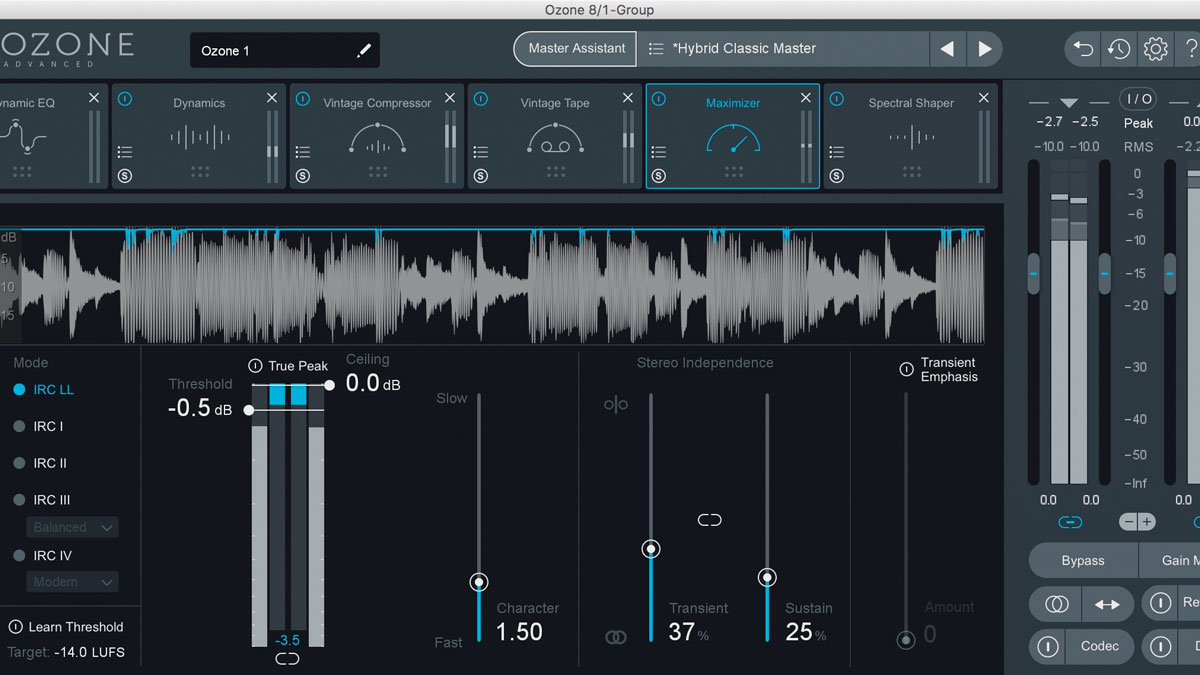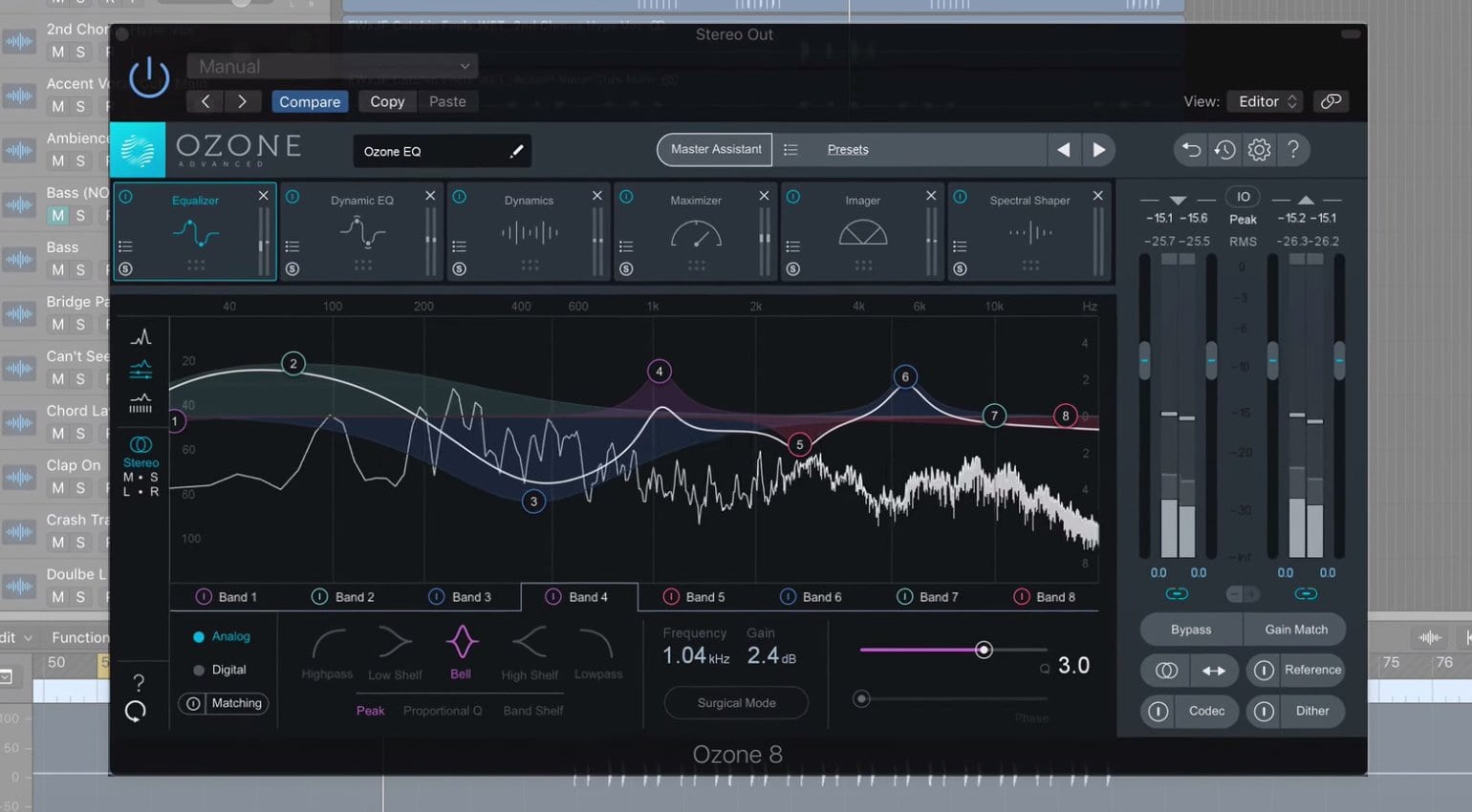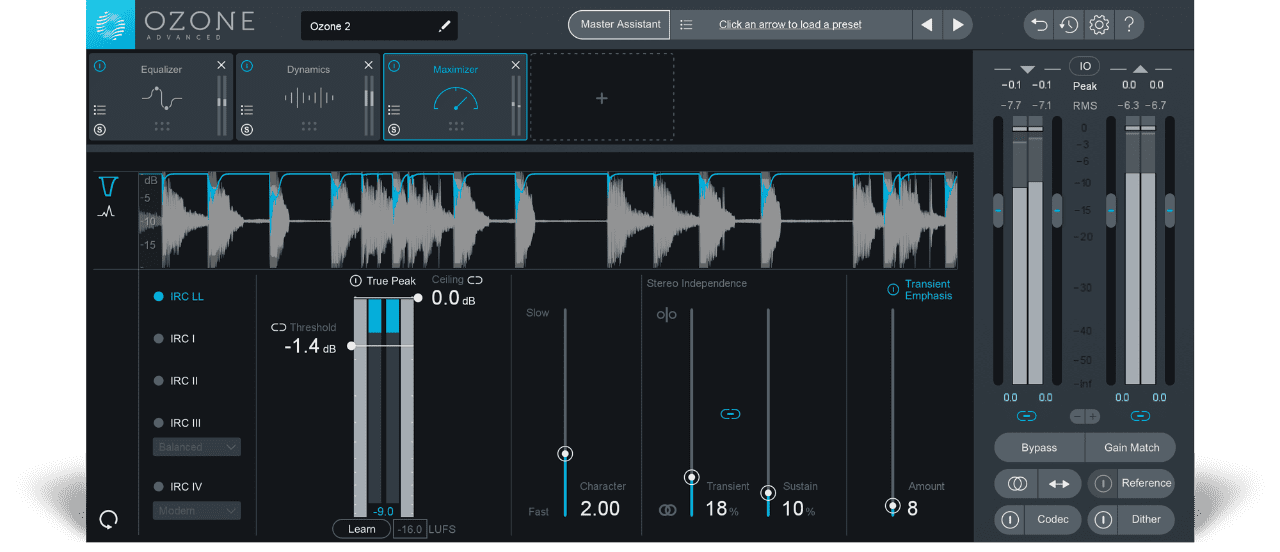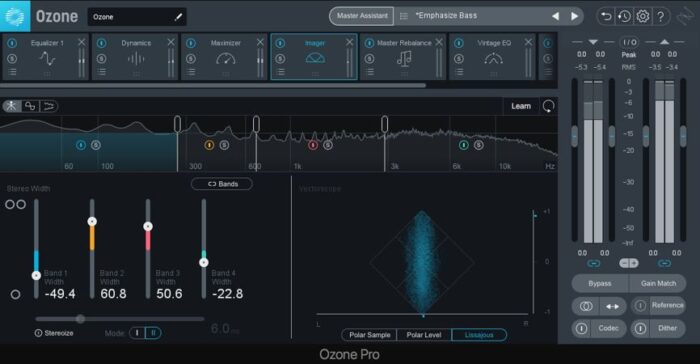
With the headlines delivered, we just have space to blast through the rest of the changes. Flipping between the active reference track and the input signal is done with the Reference power button, and the curve and level of the reference track can optionally be set to appear in all module spectrograms and the input meter. The detection of these is variable in its success, but markers are easily moved, deleted and created. Ozone’s machine learning algorithm is deployed again to set markers on the reference tracks, segregating sonically consistent regions - ie, verses, choruses, etc - for looped playback. The new Track Referencing feature is a simple but useful system for A/B comparison of your master with up to ten imported tracks. It’s a brilliant instant problem solver that slots perfectly into Ozone’s rack. Set a frequency range for processing (that of your overly sharp hi-hats, for example, or vocal sibilance), choose Light, Medium or Heavy gain reduction, lower the Threshold as required, tilt the spectral timbre with the Tone slider, shape the envelope with the Attack and Release controls, and marvel as those hi-hats or ‘esses’ sink smoothly back into the mix without affecting quieter sounds in the same spectral neighbourhood.

Ozone 8 Advanced also sees the addition of the Spectral Shaper, a frequency-conscious dynamics module for effortless ironing out of harshness and other objectionable high-end noises. While the chains it came up with for our test tracks were definitely in the right ball park, they always required at least moderate editing and balancing. What it absolutely isn’t is a quasi-magical one-click virtual mastering engineer. Like Neutron’s Track Assistant, as long as it’s approached with realistic expectations - ie, that it’s really just suggesting a starting point from which to dial in your own settings - Master Assistant is a solid enough system. It’s a great system, although it only works with EQ in stereo mode, not mid/side. The low end Crest Factor is also displayed in a three-segment meter - keep it in the centre segment for optimum results.Ī menu enables selection of any active instance of Ozone 8, Neutron 2 or their module plugins in the project, bringing up the EQ controls and a spectrum analyser for EQ and Post EQ, and just the analyser for all others.

The idea is to place Tonal Balance Control on the master out and adjust EQ settings throughout the mix to get the white spectrum curve to fall entirely within the green target range, which is selected from three preset types (Bass Heavy, Modern and Orchestral) or any number of analysed tracks from your own library.


In Broad mode, the analyser divides the frequency spectrum and target range into four easily read blocks, while Fine mode gives a full, high-res view of the spectrum and target for detailed comparison. A separate, included plugin, Tonal Balance Control (Advanced only) facilitates viewing of a track’s spectral distribution relative to one of three target curves defined by analysis of thousands of mastered tracks, and acts as a central control station for the EQs in all running instances of Ozone 8 and Neutron 2 Advanced.


 0 kommentar(er)
0 kommentar(er)
